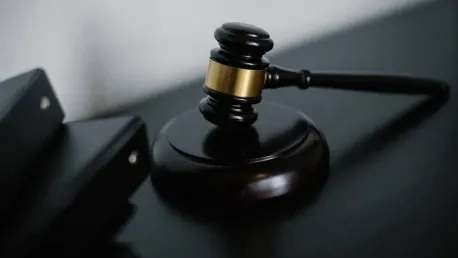In recent deliberations, the U.S. Supreme Court justices appeared open to the argument that employers should need to present merely a preponderance of the evidence, rather than clear and convincing proof, to establish that specific employees fall under Fair Labor Standards Act (FLSA) overtime exemptions. This crucial debate, originating from the case E.M.D. Sales, Inc. v. Carrera, questions whether the evidentiary burden should be lower to prove exemptions under the FLSA. The petitioner, E.M.D. Sales, Inc., maintains that the FLSA’s text does not explicitly demand a higher evidentiary standard and highlighted that similar past cases did not enforce such a requirement.
The Argument for Preponderance of Evidence
Interpretations and Historical Context
Counsel for E.M.D. Sales, Inc., Lisa Blatt, argued passionately that the “clear and convincing evidence” standard holds historical significance primarily for cases involving substantial deprivations of rights by the government rather than mere monetary claims. Blatt contended that the importance of retaining non-waivable overtime pay rights should not dictate a higher proof standard in these contexts. According to her, this elevated standard has traditionally been reserved for cases of profound consequence, where individual liberties or rights were at significant risk, a situation different from financial claims like those under the FLSA.
The background of the case reveals that E.M.D. Sales classified three sales representatives as outside salesmen, claiming them exempt from overtime requirements under the FLSA. However, a Maryland district court decision ruled against the company, demanding clear and convincing evidence for such an exemption. This ruling was later upheld by the 4th U.S. Circuit Court of Appeals, citing circuit precedent. Blatt and Aimee Brown, representing the U.S. Department of Justice, underscored that Congress had not stipulated a specific proof standard for FLSA overtime exemptions, thereby suggesting that the more commonly accepted preponderance of evidence should be the default as it is for most civil actions.
Implications for Employers and Workers
Blatt emphasized that adopting the preponderance of evidence standard aligns with general civil litigation practices, which do not necessitate a heightened burden of proof. This alignment, she asserted, simplifies the legal landscape and averts unnecessary complexity in adjudicating overtime exemption disputes. Additionally, it could potentially reduce litigation costs and encourage fairer, quicker resolutions in overtime-related cases. A lower standard of proof would possibly favor employers by making it easier to classify certain employees as exempt, balancing the FLSA’s protective purpose with practical compliance.
Conversely, respondent employees’ counsel, Lauren Bateman, made a compelling case for maintaining the clear and convincing evidence standard. Bateman noted that employers naturally possess significant control over the pertinent evidence, which they could manipulate to their advantage. She argued that a higher evidentiary standard is necessary to safeguard the FLSA’s public mission of protecting workers’ wages, ensuring that exemptions are only granted when undeniably warranted. Adopting this stringent standard serves as a critical check on employers’ power, helping to prevent unjust denial of overtime pay to employees who rightfully deserve it.
The Supreme Court’s Reception
Justices’ Concerns and Queries
The reactions of the Supreme Court justices ranged from solidarity to skepticism regarding the employees’ propositions. Justice Samuel Alito and Chief Justice John Roberts, for instance, questioned the necessity of imposing a higher standard specifically under the FLSA compared to other significant labor statutes. They raised concerns about the potential complexities and inconsistencies this may introduce. Nonetheless, Bateman remained steadfast, maintaining that the unique characteristics of the FLSA’s overtime protections justified a higher standard, focusing on the act’s core objective of worker protection.
The justices expressed interest in understanding how the employees’ higher burden of proof could create conflicts with other legal and procedural norms. Bateman reasoned that while the FLSA uniquely serves working-class protection, thus meriting a stricter evidentiary requirement, the preponderance of evidence standard could undermine this intention. The outcome of this pivotal case hinges on whether the Court finds Bateman’s argument on the distinctiveness of FLSA protections compelling enough to maintain the higher standard.
Broader Implications and Future Considerations
In recent discussions, U.S. Supreme Court justices indicated they might agree that employers need only a preponderance of the evidence, rather than clear and convincing proof, to establish that certain employees fall under Fair Labor Standards Act (FLSA) overtime exemptions. This significant debate stems from the case E.M.D. Sales, Inc. v. Carrera and questions whether the evidentiary burden should be lowered to qualify employees for exemptions under the FLSA. E.M.D. Sales, Inc., the petitioner, argues that the FLSA’s language does not explicitly require a higher evidentiary standard. Moreover, the company pointed out that previous cases with similar circumstances did not mandate such a stringent requirement. The outcome of this case could have substantial implications for employers and employees alike, potentially altering the standards by which overtime exemption cases are judged and setting new legal precedents regarding evidentiary burdens in labor law.









